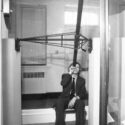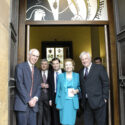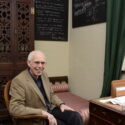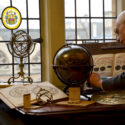Jim Bennett (1947–2023): life as a museum practitioner
Article DOI: https://dx.doi.org/10.15180/242105
Keywords
Biography, curatorship, history of mathematics, history of science, museum practice
It is unusual for a historian of science to be granted an obituary in a national newspaper – particularly one who, as a museum curator and director, had a focus on the prosaic realm of scientific instruments. Yet since his death on 28 October 2023, Jim Bennett has been the subject not only of multiple notices in specialist periodicals but also a warm and insightful obituary in the Guardian (Nall, 2023).[1] Taken together, these obituaries have highlighted his internationally recognised research career – capped by the award of the History of Science Society’s Sarton Medal in 2020 – and his uncanny ability to bridge curatorial and academic communities. The creativity of his exhibitions and his commitment to public engagement have been rightly celebrated and his approachability and encouragement of students and museum newcomers admired. Throughout these responses, Jim is portrayed clearly as a pre-eminent historian of instruments, regarded with both great affection and respect. He shaped the direction of the larger field of the history of science and was a leading figure in conversations on museums and science.
My own connection with Jim goes back more than forty years. First as an undergraduate attending his lectures and then as one of his early doctoral students, before a long period as a junior colleague and frequent joint curator. Writing a few months after his funeral, and missing him greatly, I want to offer neither a formal obituary nor a purely personal appreciation. Standing back to review the outpouring of his life’s work has proved both inspiring and daunting. Simply put: how did he do it? There are the books and articles that provide rich insights and examples to emulate, ranging from the fourteenth to the early twentieth century: on Christopher Wren’s engagement with both the new science of the seventeenth century and architecture; on observatory astronomy, one of his recurring themes; and on such key practical mathematical disciplines as surveying, navigation and cosmography. A central preoccupation was the design, making and use of instruments – whether telescopes, microscopes, sextants or sundials – and these were pursued in their fullest intellectual, social, artisanal and trade contexts. He returned repeatedly to the ‘ingenious’ Robert Hooke and followed continuing strands in the history of science in Ireland and on experimental cabinets and the teaching of natural philosophy. He also turned his hand to occasional essays on collections, museums and the history of science.
In themselves these publications are worthy of a significant career. But they appeared in parallel with a stream of special exhibitions. Between 1982 and 2012, he curated and co-curated a staggering total of 35 shows, which became more ambitious and imaginative over the decades. Nor was this exclusively conceptual authorship, but typically physical installation too: object movement, panel mounting and label cutting. Less immediately visible in retrospect – but hugely demanding in their commitment of time and energy – were the innumerable and often innovative public events, the teaching, object acquisitions and cataloguing, as well as capital projects. Through it all was the daily work of museum management, not through a rotating stint as head of a department but as a permanent responsibility. Moreover, outside the museums he directed, there was also service to the sector through myriad committees and advisory groups, and his leadership as president of national bodies such as the British Society for the History of Science, the Scientific Instrument Commission and latterly the Hakluyt Society. These various positions testify not only to his organisational effectiveness but to the depth of his personal and professional engagement: Jim was never narrowly focused on his own institutions and enjoyed close relations with leading museum figures and historians, both national and internationally.
This range and diversity was only possible because these activities all supported and led each other, sustaining Jim’s extraordinary energy. Research, teaching, public engagement and museum practice were deeply interconnected rather than operating in separate spheres. Under the auspices of the Science Museum the most appropriate thread to follow here centres on Jim as a museum practitioner. It’s a term that he used about himself (Bennett, 2005), and one that resonates with the historical community of mathematical practitioners whose significance he so successfully articulated. It allows us to see how his museum work enabled both his research and teaching and in turn fed off them – providing food for thought for anyone hoping to follow in his footsteps.
Born to working-class parents in Belfast in 1947, Jim was schooled there before studying natural sciences as an undergraduate in Cambridge. He stayed on for a PhD supervised by Michael Hoskin, which became the basis for his first book on The Mathematical Science of Christopher Wren (Bennett, 1982). After a year as Lecturer in History and Philosophy of Science at Aberdeen he became Archivist at the Royal Astronomical Society (RAS) in 1974. This was a new role and for two years Jim assembled and catalogued the Society’s papers, developing familiarity not just with the operations of the institution but with treasures such as the manuscripts of William Herschel, to whom he was still returning almost forty years later (Bennett, 2012). With the RAS catalogue published, Jim moved on again, to his first museum position, as curator of astronomy at the Old Royal Observatory. Whereas at the RAS he was creating a collection from scratch, in Greenwich he joined an established institution, as part of the National Maritime Museum. His two years there provided a curatorial foundation for his subsequent career, as well as a deep exposure to the instruments and practice of early-modern positional astronomy. Years later he would build on the experience of working in situ with the Greenwich meridian instruments to study how these characteristically English instruments shaped astronomical consensus across eighteenth-century Europe (Bennett, 1992).
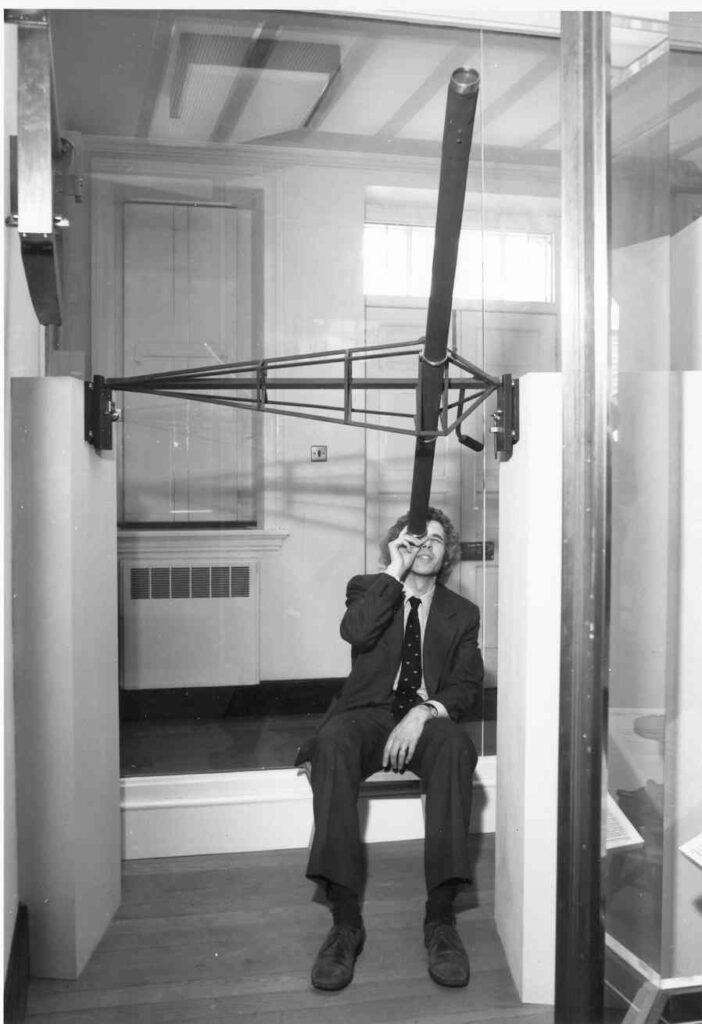
First though, there was the matter of learning the ropes of curatorship. At the RAS he had enormous liberty, effectively making up the Archivist role as he went along. When he moved to Greenwich in 1977 he was entering an organisation deeply shaped by the naval formation of its staff. The hierarchical culture was one of officers and men, with senior staff typically referred to by their former rank. Jim’s doctorate and academic background made him an extremely exotic creature – what impression would he make? How would he fit in? On arriving at the Old Royal Observatory he met Derek Howse, the head of astronomy to whom he would report. On that very first day he learnt that he would literally be reporting to Commander Howse every subsequent day: he should attend at 10am for daily briefing and instructions. As Jim recalled in an interview some forty years later:
So the next day comes along and at 10:00 – what do I do? I’m over in my office in the Meridian Building and Derek’s in his turret. What do I do? I knew that if I went that first time I was supposed to go, that would be it. I’d have to go every day at 10:00. So I didn’t go and I had no idea what was going to happen. I just stayed at my desk. If he wanted to ring me, he could ring me. But I disobeyed him the first day that I had the chance to be good, and nobody rang anybody. Derek didn’t ring me. He must have been sitting there wondering what he should do. And I didn’t go to him and we never spoke about it again. I took a big risk, but I knew it was important to make some sort of statement.[2]
The ability to be both bold and firm of purpose – with humour and grace – would be a constant. What could have been a professional disaster at Greenwich became a fruitful relationship.
In 1979 he was back in Cambridge, now as curator of the Whipple Museum. This was where his independence and creativity really blossomed, where he became an ‘original museum operator’.[3] Greenwich was centred on preservation and reverence, with no expectation of new displays or public engagement. In Cambridge he galvanised the public spaces with a series of special exhibitions, starting with 1982’s The Compleat Surveyor co-curated by Olivia Brown. Further topics ranged from spectroscopy to the social history of the microscope, working both individually and with instrument colleagues such as Anthony Turner, who contributed on Etienne Lenoir and instrument making in Revolutionary France. While not quite a one-man band, the museum was diminutive in size and staff, so Jim was responsible not just for exhibition installation but all aspects of museum operation, no matter how mundane. Yet the Whipple was also embedded within the intellectually expansive Department of the History and Philosophy of Science, where Jim taught at both undergraduate and Masters level. There was thus ample common ground for academic collaboration, and Roy Porter and Simon Schaffer were enrolled for 1985’s Science and Profit in 18th-Century London. Collaboration would remain another constant throughout Jim’s career, and later Cambridge exhibitions such as Empires of Physics were devised within funded projects with a larger cast of researchers. Nor were these exhibitions narrowly or exclusively focused on instruments – the wealth of the Whipple Library’s collection provided ample material for his last Cambridge show Sphaera Mundi: Astronomy Books 1478–1600, with Domenico Bertoloni Meli. As tools of knowledge, instruments typically survive not in opposition to texts but alongside them. Jim eloquently incorporated paper and brass into his compelling case for studying the history of science through practice and its rich material culture.
The intellectual ambition and breakneck pace of work in the Whipple did not mean a total rupture with Jim’s Greenwich formation. He carried at least one central element of National Maritime Museum practice to Cambridge: cataloguing. But he did so in a characteristically down-to-earth way – initiating a sequence of inexpensive A4 sectional catalogues which opened up the collection to researchers. The exhibition monographs initially followed the same format, with their production standards increasingly enhanced over the years.
While the early Cambridge exhibitions were installed on a minimal budget, Jim gradually extended his skills to fundraising. A Decade of Accessions was staged in 1992 and sponsored by British Steel. It exhibited 125 of the astonishing 1,200 objects he had acquired between 1980 and 1990. Thanks to Robert S Whipple’s financial provisions, Jim had an acquisition fund to actively expand the collection, and he did so in a targeted way, particularly to deepen the research for his second book, The Divided Circle: a History of Instruments for Astronomy, Navigation and Surveying (Bennett, 1987). The production of the exhibition’s accompanying catalogue was supported by half a dozen auction houses and instrument dealers from whom purchases had been made. This easy familiarity with the modern marketplace would later be refracted in his historical study of early-modern ‘Shopping for Instruments in Paris and London’ (Bennett, 2002).
Jim’s extraordinary capacity was certainly stretched in his last Cambridge years, when he added Senior Tutor at Churchill College to his other responsibilities. His move to Oxford in 1994 to head up what was then the Museum of the History of Science, wiped the administrative slate clean and provided an opportunity to put to work the lessons of the previous fifteen years.
A special exhibitions programme was immediately launched with The Measurers in 1995, centred on a Renaissance painting in the collection. Half of the permanent display in the museum’s entrance gallery was cleared to create space for the initiative, and the opening hours were overhauled to make the museum more accessible to those living and working in the city. The Geometry of War, 1500–1750 followed in 1996, featuring mathematical instruments and books for military purposes. Design and construction were as much a DIY exercise as in Cambridge. But Jim’s display techniques were increasingly self-conscious, looking to communicate through visual as well as verbal means. The contrast between beautiful sixteenth-century gilt objects and the brutality of their advertised use was pointed up by the in-case structures. Rough construction blocks and rusty iron mesh for reinforced concrete provided the object supports, along with an indelible memory: the exhibition team of three standing in a builder’s merchant effetely agonising over the texture, colour and exact aesthetic effect of different types of grey concrete block. The mystified double takes of the yard’s more regular customers were priceless.
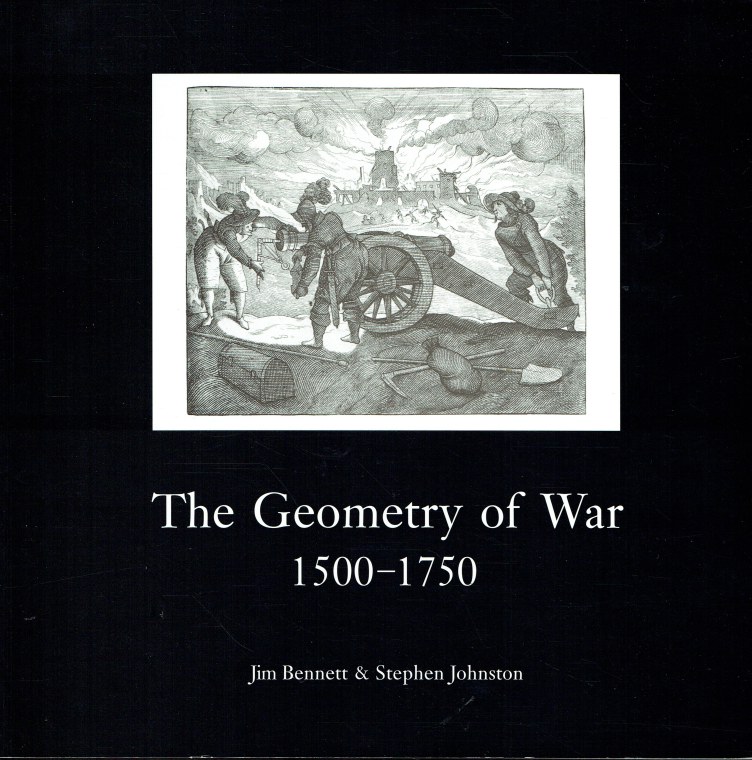
Jim’s cataloguing impulse remained strong. But now the landscape had changed. Rather than print, electronic media had emerged into the mainstream. Databases were no longer the arcane province of remote IT specialists, as they had been twenty years earlier when they were first mooted at Greenwich. With the in-house creation of an inventory database, cataloguing could be carried out in the galleries or stores with a laptop. Jim, an early enthusiast for email, was quick to appreciate further digital opportunities that promised to radically alter access. The Oxford museum launched its first website in 1995 when the browser of choice for the fledgling web community was Netscape. This was not just ‘brochureware’ but from the very beginning included full virtual versions of physical exhibitions.[4] Remarkably, and within just a couple of years, the collections database was online for all – Jim relying on the technical skills of Giles Hudson for many of these digital innovations. At the same time the electronic mailing list RETE was created as a forum for the historical instrument community. Still going strong as a global resource, it is also still hosted in Oxford. Specific projects explored the collaborative potential of new digital tools. Jim led a European-funded project which created Epact, a database of medieval and Renaissance European instruments drawn from the Oxford collection, the British Museum, the Museum Boerhaave in Leiden and what is now the Museo Galileo in Florence. The rapid development of the internet meant that what had been envisaged as a digital resource for consultation within the partner institutions was put directly online, where it continues to attract web traffic.[5]
At Cambridge, Jim had taught within the Department of the History and Philosophy of Science. The quite different structures at Oxford enabled a new departure: an independent MSc within the History Faculty. ‘History of Science: Instruments, Museums, Science, Technology’ was taught by the museum’s three curators (Jim, Willem Hackmann and myself) supplemented by a roster of guest lecturers. Student numbers were deliberately limited to a maximum of eight, to enable object handling, and the course was outward looking, with annual trips to London and the Netherlands. Jim’s internationalism was matched by the diversity of the student cohort and its esprit de corps cemented by his egalitarianism. There was bafflement at the Museum Boerhaave in Leiden that Jim travelled in the same style as his students. Surely his directorial dignity and professorial rank should elevate him beyond a shared room in a hostel above a pub?
Student exposure to museum practice elsewhere was complemented by activity in Oxford. Each year’s cohort was invited to collaborate on a joint exhibition in the museum. This was not a credit-bearing requirement of the course, but underlines the value Jim placed on the medium as a venue for real intellectual as well as practical formation. The most ambitious student projects resulted in public displays, websites and even newly commissioned replicas. This MSc experiment ran for ten years. The programme was deliberately not vocational – this was not a museum studies course which promised a way into the profession – but students nevertheless did go on to a range of museum and academic positions, some via doctorates which Jim supervised.
Beyond this welter of initiatives, Jim was also looking towards larger institutional transformation. After his arrival in Oxford, and with the support of Gerry Martin and the Renaissance Trust, he began exploring options for a major redevelopment – the most consequential in more than 300 years of the Old Ashmolean Building. The architectural scheme proposed an expansion towards the street – discreetly hidden under the pavement cobbles – as well as into Oxford’s old Town Ditch at the rear. The timing was excellent: Jim was one of the early successful applicants to the new Heritage Lottery Fund and led the project to completion in 2001. The rear infill provided a dedicated special exhibitions gallery and desperately needed staff accommodation above, and its construction unearthed new evidence of early-modern museum practice. Discarded bones from the Ashmolean’s displays and anatomical teaching, and chemical vessels from its basement laboratory, became the basis for the first exhibition in the new space, accompanied by the equally remarkable ‘floorboard archaeology’ from inside the building. Recovered from a deep bed of underfloor dust on the building’s top landing were signs of museum renewal from what was more usually characterised as the Ashmolean’s eighteenth-century stagnation: labels, key tags and the scurrilous doodles of the students who assisted the keeper. Rather than a sweeping away of the past, this was a reanimation of the vitality and scientific mission of the original Ashmolean Museum (Bennett, Johnston and Simcock, 2000).
The extension and complete refurbishment of a Grade 1 Listed building in the very heart of Oxford’s central university precinct was technically and financially challenging. But it opened up the museum as never before. There had been about 25,000 visitors a year when Jim arrived; under his stewardship the figures rose beyond 175,000. The public programme driving this explosion in numbers was correspondingly energetic: artist residencies, collaborations and interventions; study days; lecture series; and new formats such as 10/10 days (from 10am to 10pm) with guest speakers, demonstrations, music and film, each on a rich theme (such as ‘Blue’ or ‘Venus’) that might encompass astronomy, botany, poetry, literature and psychology as well as history. There was also the continuing bread-and-butter of public engagement: gallery tours and ‘table talks’ where an individual object would be got out, operated and interpreted. This in-person experience kept Jim grounded. A casual museum visitor with no prior interest in the history of science might easily dismiss an unfamiliar artefact as overly technical, boring or insignificant. Jim’s gift as an adept storyteller of objects was to reveal to audiences that they were in the presence of the most interesting thing in the world. Even if only briefly, visitors would appreciate the questions and dilemmas motivating the museum professional, and enjoy the discovery that curators were ‘concerned about things they had never imagined anyone would worry about’ (Bennett, 2005, p 608). Jim’s historical expertise was honed by precisely such encounters, and his own research questions were typically stated with simplicity and clarity.
Collections work was not sacrificed to this public commitment. Major acquisitions such as the Marconi Collection, secured in tandem with the Bodleian Library, extended the museum’s traditional emphasis on mathematical, astronomical and microscopical instruments into the early technology of wireless radio. Jim led a team to Chelmsford and helped pack hundreds of items, from fragile glass valves to household furniture, before driving one of the 7.5 tonne lorries back to Oxford. Of course, this led to a dedicated online catalogue, and a special exhibition Wireless World, along with a 10/10 day ‘Wave’ and Jim’s public performance as the Three Marconis, with each of Marconi’s Italian, Irish and English identities ably scripted and voiced by himself.
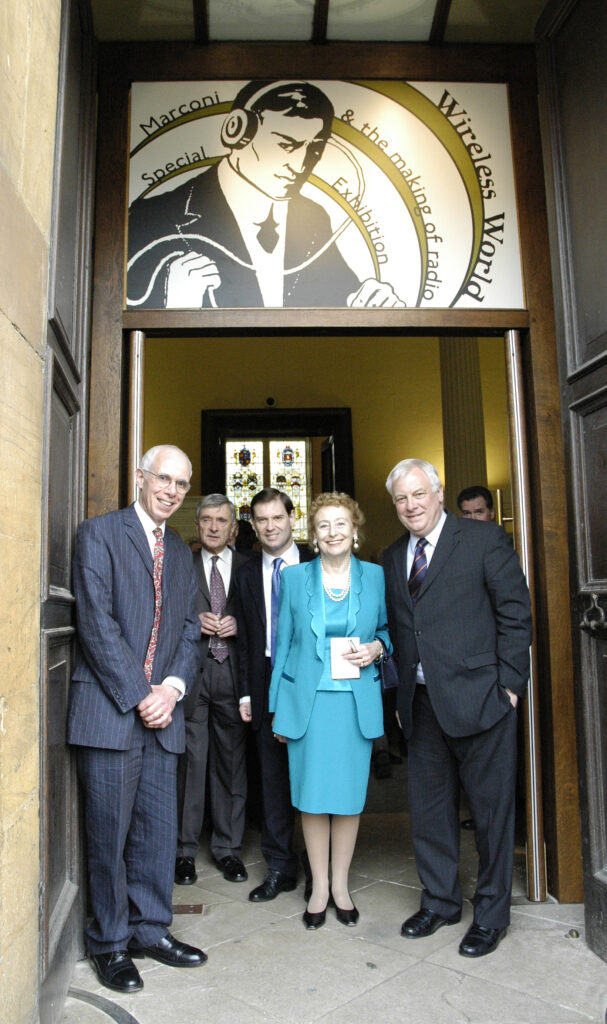
Jim’s dual commitment to both the collection and public engagement led to bold solutions. The museum’s small footprint precluded a separate lecture theatre, but Jim wanted a platform for larger public talks. However, the showcases of the permanent displays prevented anything more than small gatherings. The solution? Move the showcases – with the objects inside. Fainter hearts would have quailed but, with the assistance of a scissor lift table, the reconfiguration of the basement gallery became a regular procedure. Despite (and perhaps because of) the anxieties of collections managers, the process was always free of incident, and permitted audiences of up to eighty to hear speakers such as Lisa Jardine or take part in demonstrations with teams of neuroscience researchers. The calculated risks that Jim took at the very outset of his museum career were still characteristic of his practical style even when in positions of responsibility.
Equally undimmed was his playfulness. In Cambridge, this was initially reserved for internal consumption, using the collection’s own resources to perform magic lantern shows at the annual departmental party, with the humour of 1066 and All That providing the narrative. Showmanship was gradually inserted into the public face of the Whipple Museum, with a ‘working’ time machine at the entrance to the exhibition of 1900: the New Age. In Oxford, Jim experimented further. The ‘Steampunk’ show brought in not just the imagined objects of an alternative Victorian technology, but its people – with a fashion catwalk where brass goggles represented the height of style. His light touch aimed to confound the expectations of those for whom ‘Museum’, ‘History’ and ‘Science’ carried less than positive connotations, and extended to the use of the collection. ‘Eccentricity’ demonstrated Jim’s ease with the exhibition medium, highlighting the museum’s curiosities. Rather than entertainment at the expense of the past, this was a historical provocation through objects whose authentic strangeness rivalled the fever dreams of steampunk artist-protagonists.[6]
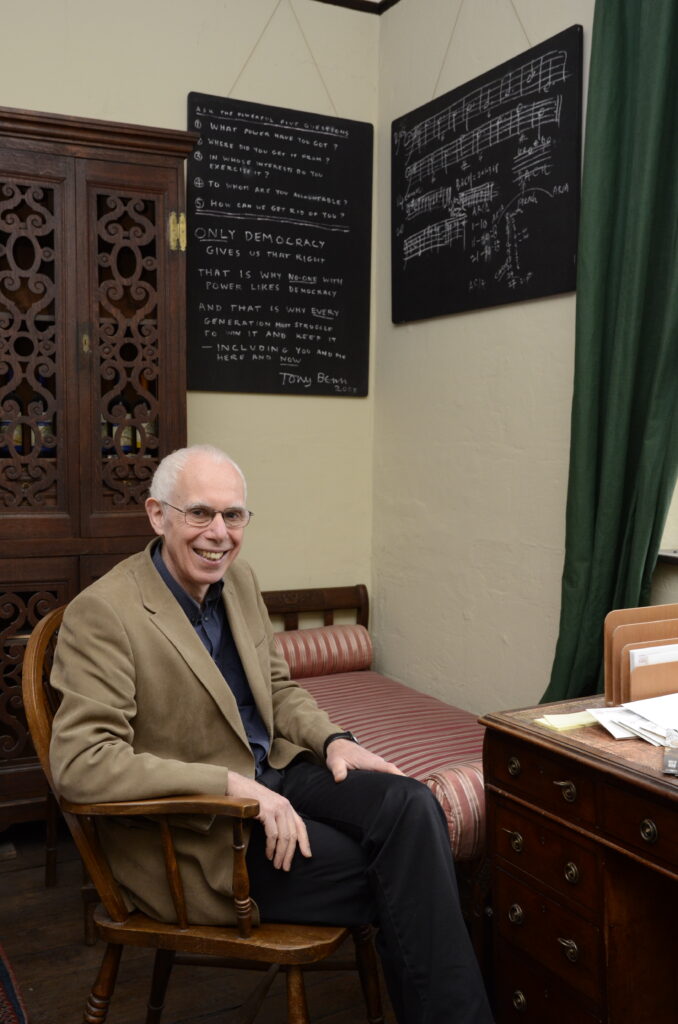
Jim retired from Oxford in 2012, his last exhibition a fresh reimagining of the intellectual, craft and commercial Renaissance in Astronomy in the age of Copernicus and Mercator.[7] Fittingly, it was in partnership with the Royal Astronomical Society, where he had first embarked on collections-based work in 1974. But Jim was not looking back or resting on laurels. He had already served on the Science Museum’s committee from 2004–10. Now he took up a position there as Visiting Keeper. He was active as curator and historian, overseeing the Science Museum’s version of the travelling exhibition Leonardo da Vinci: the Mechanics of Genius, and writing on previous Leonardo shows and their replica machines (Bennett, 2015). That latter paper appeared in this journal, whose character he had helped to shape as the first Chair of the Editorial Board. Even after his formal association at South Kensington ended in 2015 he served as Chair of the advisory panels for both the Mathematics and Science City galleries.
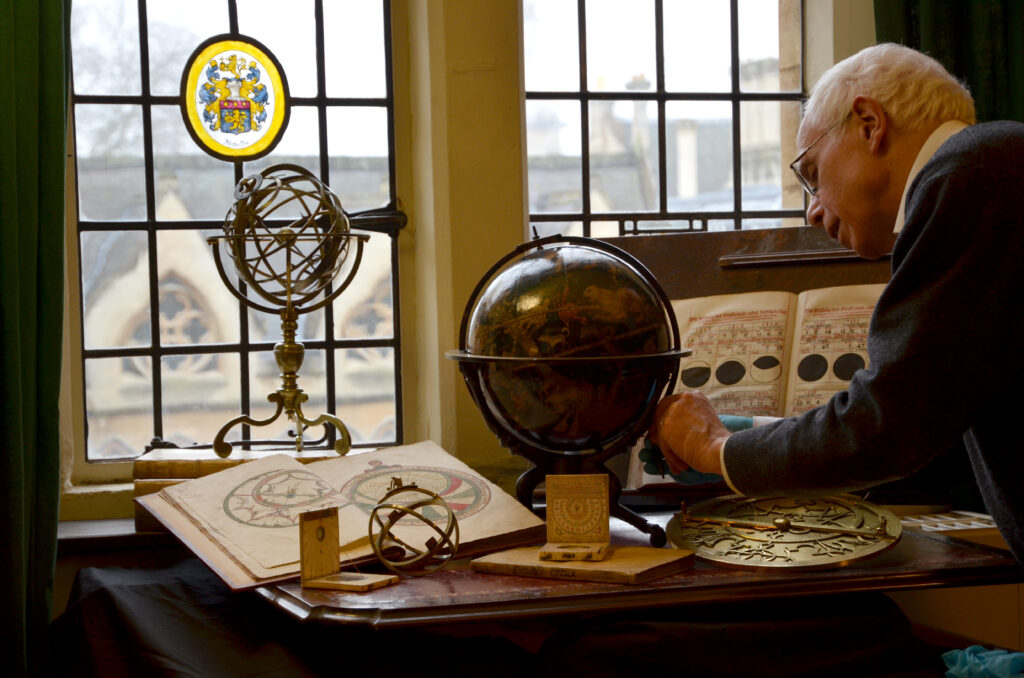
Particularly for the latter, he was able to argue for an approach strikingly distinct from the direction of recent exhibits in South Kensington. This was a show devoted not to a scientific topic or an engineering discipline, but to a place: London as a site for science over several centuries. Such a simple statement of the proposition in no way communicates the magnitude of the required leap in exhibition practice. While the accomplishment was in the hands of the Museum’s curatorial team, Jim’s historically-rooted vision was key: foregrounding the human actors, discreetly representing craft skills, and believing that the complex stories of objects could be compelling for a large public. As ever, that public commitment was balanced by the academic: he helped to steward the Metropolitan Science research project on which the exhibition was built (Bennett and Higgitt, 2019).
After decades leading small university museums, there is a pleasing symmetry to this final phase of Jim’s museum career. He had begun to learn his trade at the National Maritime Museum 35 years earlier. The Science Museum offered a chance to return to a national museum, if not as a decision-maker himself, at least as an authoritative advocate. Long experience of interacting directly with visitors had convinced him that there was public appetite for displays which were not bound by a ‘narrow concept of “the science”, bereft of its human history’ (Bennett, 2005, p 608). Far from a genteel winding down, the Science Museum years were a genuine culmination, where Jim could help put into wider practice the approaches he had promoted and pioneered. That national ambition also propelled him to regular appearances on Radio 4’s In Our Time during these years.
Jim truly loved work – both the original practices and products of ingenious scientists, practitioners and artisans, and the historical work required to make sense of their achievements and bring them to academic and public audiences. The best way to respect his memory is to continue his practice of the museum art, doing so with the spirit he embodied – deeply serious, enquiring, experimental, international, collaborative, joyful.
Acknowledgments
I am grateful for comments and help from Robert Anderson, Daniel Belteki, Joshua Nall and Sylvia Sumira.


